Lake Capote is seasonally stocked with rainbow trout, brown trout, channel catfish, and largemouth bass. Following are pictures and a brief descriptor of the game fish found in Lake Capote.
Rainbow Trout
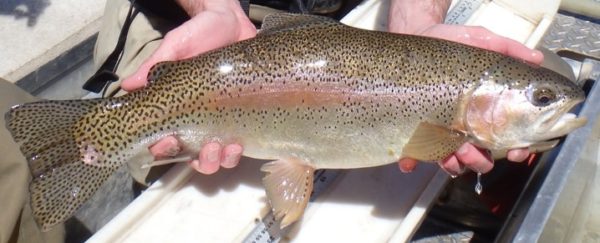
These fish were introduced in the 1880s and have become both the angler’s favorite and the mainstay of Colorado’s hatchery system (millions of catchable and subcatchable sized fish are stocked annually). Rainbows can be found in most mountain lakes and streams, as well as many plains reservoirs. Physical characteristics that can help distinguish rainbow trout include dark spots on a light body, continuous spotting throughout the body, and often a “rainbow” horizontal reddish stripe. Rainbow trout may be caught with a variety of flies, baits, and lures.
Brown Trout

The brown trout was first brought into this state in the 1890s and is now abundant from high mountain streams to broad rivers flowing onto the plains. These fish can be difficult to catch, but many anglers have good success during their fall spawning runs. A large dark spotting pattern and reddish dots can help anglers distinguish these fish from rainbows and cutthroats.
Channel Catfish
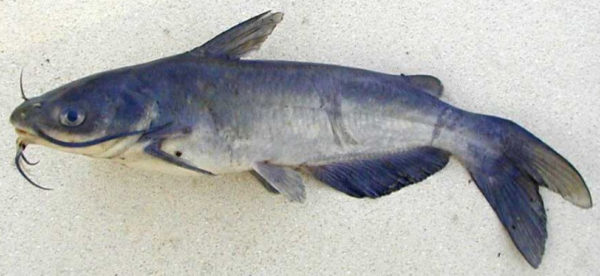
Channel cats are native to eastern Colorado and have been stocked in warmer rivers and reservoirs throughout the state. These fish are easily identified by their barbels (whiskers), forked tail and sporadic black spotting. Night fishing with live bait, chicken innards, flavored dough balls, or any other smelly concoction provides the best angling success. Cats larger than 30 pounds have been caught in Colorado, and for those willing to take the effort, they make a tasty dinner.
Largemouth Bass
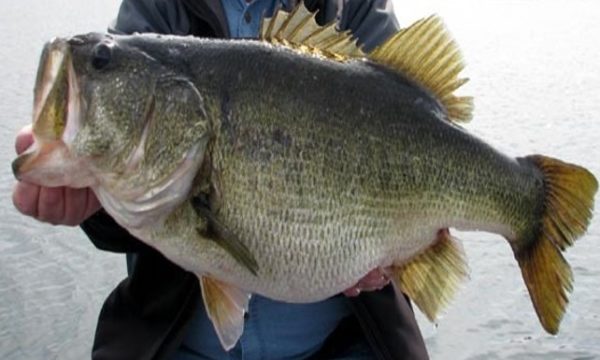
Among the first species of fish introduced into Colorado was the largemouth bass in 1878. As the name suggests this fish has a very big mouth and its jaw extends past the eye. You can also distinguish them as the bass with the horizontal stripe on their body. Largemouth have exceeded 10 pounds in Colorado and are renowned for their aggressive predatory behavior. Casting lures and plugs during dawn and dusk hours around cattails and sunken logs will give you the best chance to land one of the lunkers.
Nuisance Fish (unlimited bag limit, seriously-take as many as you want of the following fish)
Green Sunfish
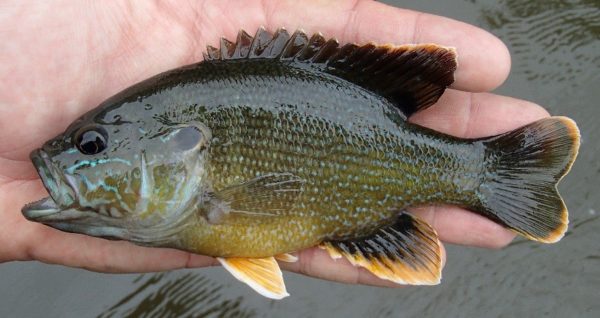
This fish is similar in appearance to the bluegill, but has a larger mouth and is olive in color with short, rounded pectoral fins and yellow trim on the fins. This stocky fish is found in both streams and impoundments and spawns in shallow areas from June to mid-August. Like most sunfish, this sporty panfish can be taken with crickets, worms, and other bait rigged under a bobber, or with small lures, jigs, and flies
Grass Carp
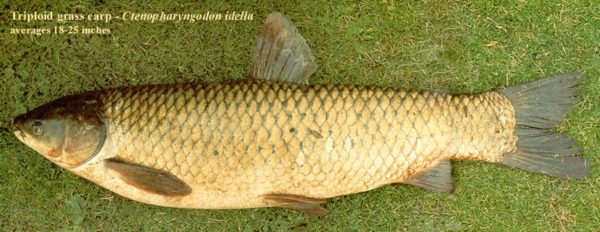
The Grass Carp belongs to the minnow family and is also known as “White Amur” – a name developed to avoid the negative connotations of “carp”. This large import from China is a freshwater herbivore introduced in the United States for aquatic weed control. In many parts of the country it is considered an invasive species, and stocking/transporting it is illegal. However, a sterile “triploid” form is still used to control aquatic weeds. Amur have a torpedo-shaped body with moderately large scales and a scaleless head. Colors range from silver to olive on the back, with white on the belly.

